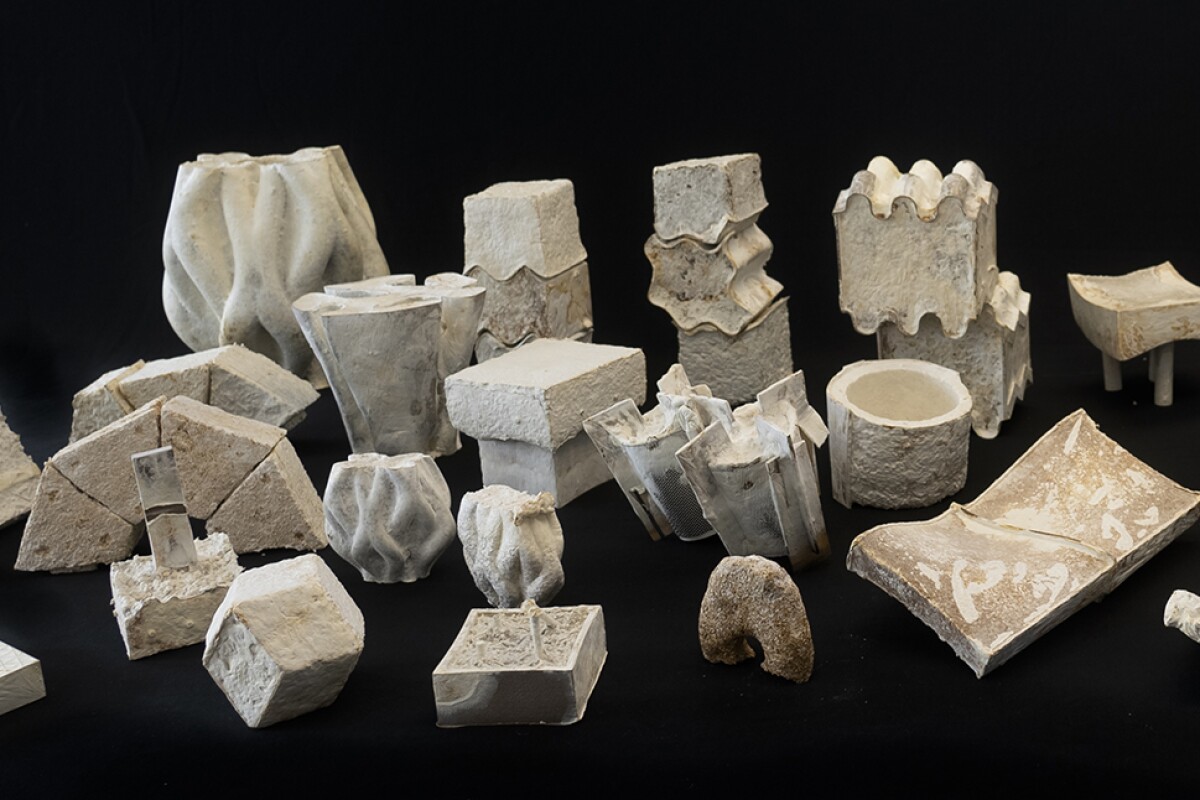The UK’s PLP Architects is focused on creating a greener future by collaborating with nature, developing a fungus-based modular block that is renewable and biodegradable, and has the potential to become a new building material with minimal environmental impact.
In biology, the word "symbiosis" is used to describe two different organisms living together for mutual benefit. Borrowing from the concept of symbiosis, it’s predicted that the current Anthropocene age – the age of humans – will make way for the Symbiocene, an era in which humans and nature are reintegrated for the good of the planet.
The folks at PLP Architecture, based in London, have embraced the coming Symbiocene, transitioning to the practice of sumbiotecture, construction focused on the biodegradability of all materials and the use of non-polluting, renewable energy. As part of their transition, over the past year, PLP’s in-house research group, PLP Labs, has studied the structural capabilities and architectural potential of mycelium biocomposites.
Mycelium is the root-like structure of fungi, a web of branching strands called hyphae, responsible for absorbing nutrients and water from the surrounding environment. Fungi are known for their carbon-absorbing abilities and, therefore, their potential to slow climate change.
Fungi, especially their mycelium, have already been earmarked as a sustainable alternative for use in the construction industry, being used to fill concrete cracks and insulate tiny houses. NASA has even explored the possibility of growing fungi houses on the Moon or Mars.
For their new project, the PLP Labs team first 3D-printed a wood formwork and packed it with a substrate injected with mycelium. As the mycelium colonized the substrate, it created a dense but moldable form. After the mycelium has grown, it’s dried using intense heat, making the biocomposite inert. It took about three months to grow the installation from start to finish.
The bonded mycelium and 3D-printed wood are used to create differently shaped modular blocks, which can be put together to create a range of forms, from partitions to seating, planters to tables. Unlike concrete and steel, both high carbon emitters, mycelium biocomposites are renewable and biodegradable. They can be grown and harvested with minimal environmental impact, are lightweight and fire-resistant, and they good insulators.

According to Architecture 2030, buildings currently generate 40% of annual global carbon dioxide emissions, with 13% attributed to building and infrastructure materials. PLP Labs’ move towards embracing Symbiocene principles with the creation of their mycelium biocomposite is an important step forward in achieving a zero-carbon build environment.
PLP Labs plan to continue experimenting with mycelium biocomposites. And, determined not to restrict Symbiocene living to use by large construction companies, they are looking at creating a DIY kit people can use to create their own mycelium blocks at home.
The below video, produced by PLP Architecture, explains what mycelium is and the experimental process that led to the creation of their modular blocks.
Source: PLP Labs






